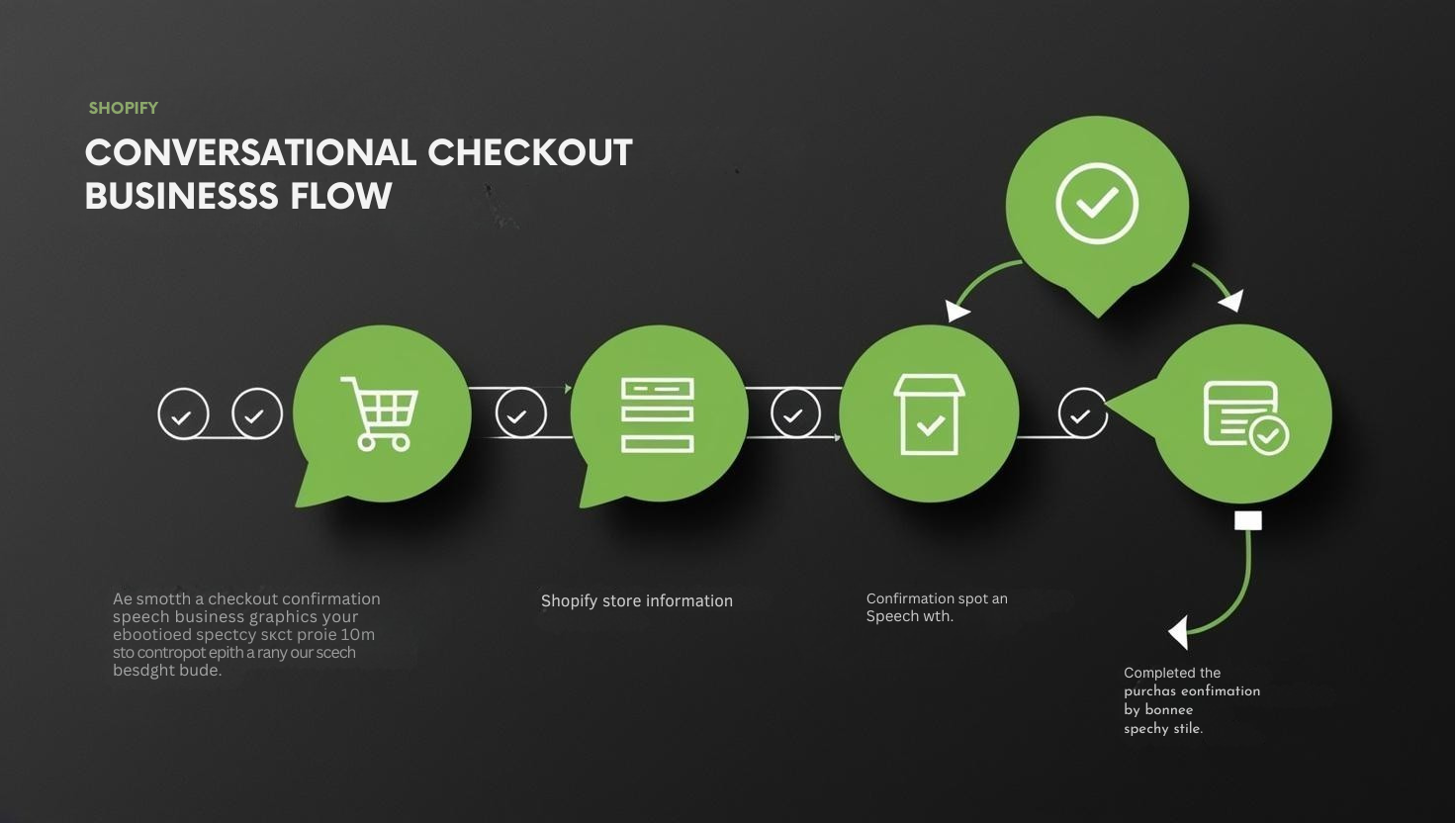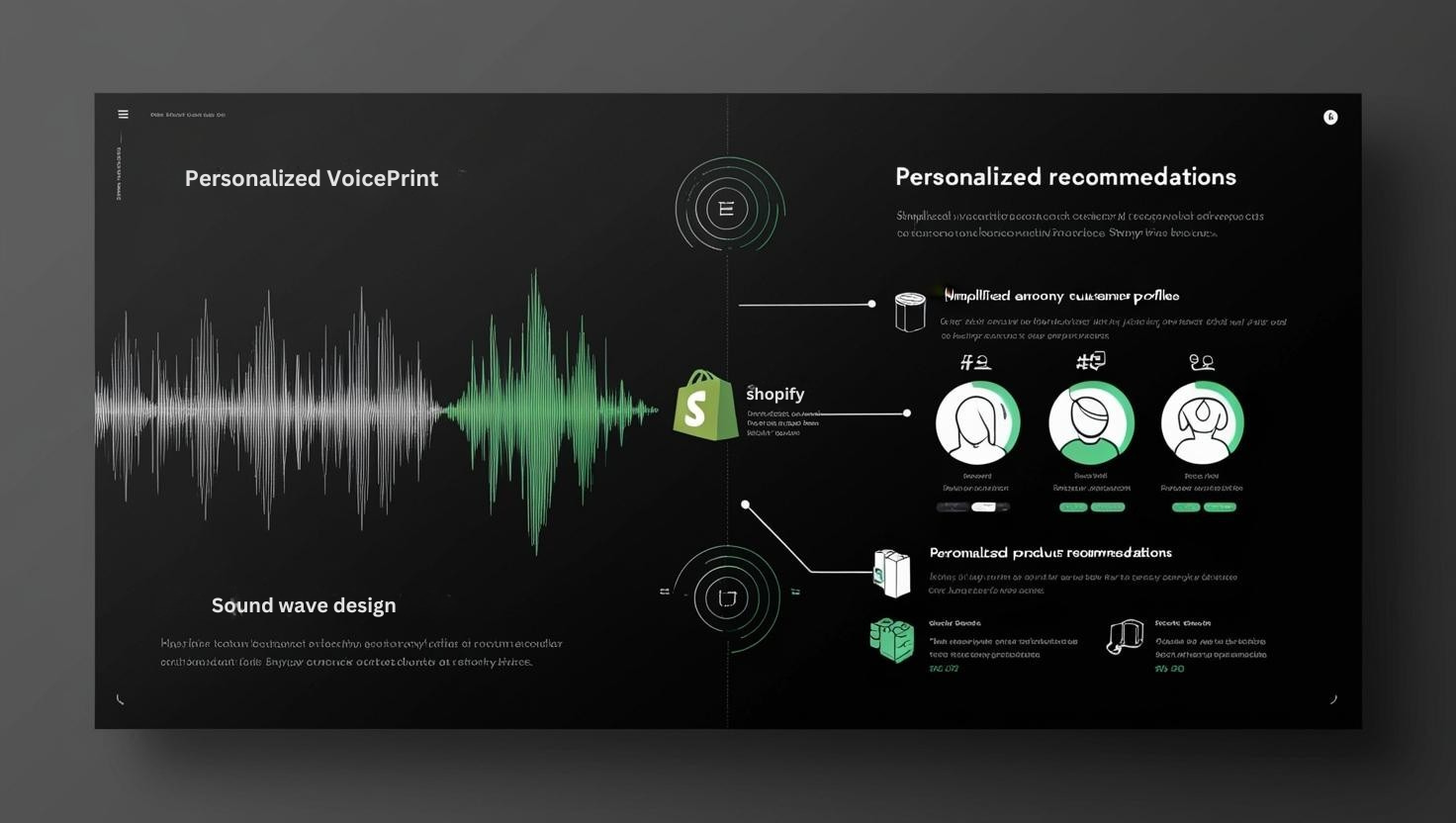Read More
Step-by-Step on SellerADvantage.co.uk
Read on LinkedIn
Read on Medium
Watch on YouTube
Voice Commerce Revolution: Speaking Your Way to Higher Conversions
Introduction
In the rapidly evolving landscape of e-commerce, Shopify store owners are constantly seeking innovative ways to differentiate their offerings and streamline the customer journey. Voice commerce represents the next frontier in this evolution—a transformative technology that promises to redefine how consumers interact with online stores. By integrating voice-activated AI sales assistants into your Shopify platform, you can create a shopping experience that feels more natural, intuitive, and frictionless than ever before. This technology bridges the gap between traditional e-commerce interfaces and the conversational nature of human interaction, allowing customers to browse products, ask questions, and complete purchases using only their voice. The implications for conversion rates, customer satisfaction, and operational efficiency are profound, positioning voice commerce as not merely a novel feature but a strategic imperative for forward-thinking Shopify entrepreneurs.
The statistics supporting voice commerce adoption are compelling and increasingly difficult to ignore. Research from Juniper Research indicates that voice commerce transactions are projected to exceed $80 billion globally by 2026, representing a staggering 900% increase from 2021 figures. This exponential growth is being driven by several converging factors: the widespread adoption of smart speakers and voice assistants in homes, the improving accuracy of natural language processing algorithms, and evolving consumer preferences that increasingly favor convenience and speed. For Shopify store owners, these trends present both an opportunity and a challenge—early adopters stand to capture significant market share and customer loyalty, while those who delay implementation risk falling behind competitors who offer more intuitive shopping experiences. Voice commerce also addresses accessibility concerns, opening your store to customers with visual impairments or those who simply prefer hands-free interactions, thereby expanding your potential customer base in meaningful ways.
The technical barriers to implementing voice commerce have significantly diminished in recent years, making this technology accessible to Shopify stores of all sizes. Advanced AI frameworks now allow for sophisticated natural language understanding that can interpret complex customer queries, recognize different accents and speech patterns, and maintain context throughout multi-turn conversations. These systems can seamlessly integrate with your existing product catalog, inventory management, and checkout processes, creating a unified commerce experience across all customer touchpoints. Furthermore, voice biometrics can enhance security through voice recognition, addressing consumer concerns about payment safety in voice-activated purchases. For Shopify merchants, this technological maturation means that implementing voice commerce is no longer a speculative venture requiring massive investment but a practical enhancement that can be deployed through purpose-built apps and integrations available in the Shopify ecosystem, offering a compelling return on investment through increased conversion rates, larger average order values, and enhanced customer engagement metrics.
Key Action Points
1. Implement Contextual Voice Search Capabilities
The foundation of effective voice commerce lies in sophisticated search capabilities that understand not just keywords but the contextual meaning behind customer queries. Unlike traditional text-based search, voice queries tend to be longer, more conversational, and often include natural language nuances that standard search algorithms might miss. Implementing a voice search system that can interpret these subtleties requires specialized AI technology designed specifically for natural language processing. This technology should be capable of understanding synonyms, product categories, and even subjective descriptors like “elegant” or “durable” that customers might use in their queries. The most advanced systems can also maintain context throughout a conversation, remembering previous queries to refine search results progressively. For example, if a customer asks for “men’s running shoes,” then specifies “in size 10,” and finally asks to “show only waterproof options,” the system should narrow results accordingly without requiring the customer to repeat previous parameters.
To implement contextual voice search effectively, Shopify store owners should begin by ensuring their product catalog is optimized with comprehensive metadata. This includes detailed descriptions, accurate categorization, and extensive attribute tagging that captures various ways customers might describe your products. Beyond basic product information, consider incorporating customer review data into your search algorithm, as this often contains valuable descriptive language that matches how real customers think about and search for products. Next, evaluate voice search solutions available in the Shopify app marketplace, looking specifically for those that employ advanced semantic search capabilities rather than simple keyword matching. The best solutions will offer machine learning components that improve over time based on customer interactions, continuously refining their understanding of your specific product catalog and customer language patterns. Finally, implement analytics tools that track voice search queries, allowing you to identify patterns, common questions, and potential gaps in your product descriptions or categories that might be hindering successful voice-based product discovery.
The impact of well-implemented contextual voice search on conversion rates can be substantial. Research indicates that when customers quickly find exactly what they’re looking for, conversion rates can increase by up to 43% compared to traditional navigation methods. This improvement stems from reduced friction in the shopping journey and the elimination of navigation fatigue that often occurs when customers need to browse through multiple pages or refine text searches repeatedly. Additionally, voice search data provides valuable insights into customer intent and preferences that can inform your broader marketing and product development strategies. By analyzing the natural language customers use when searching by voice, you can identify emerging trends, unmet needs, and opportunities for new product lines or bundle offerings. This intelligence allows you to continuously refine your store’s voice commerce capabilities while simultaneously enhancing your overall product strategy to better align with customer expectations and desires.

2. Design Conversational Checkout Experiences
The checkout process represents a critical juncture in the customer journey, where friction and complexity often lead to abandoned carts and lost sales. Voice-activated AI sales assistants offer an opportunity to reimagine this process as a conversational experience, significantly reducing the cognitive load on customers and streamlining the path to purchase. A well-designed conversational checkout experience guides customers through payment and shipping options through natural dialogue rather than form-filling, creating a more engaging and less tedious transaction process. The most sophisticated implementations can securely access stored payment methods, shipping addresses, and customer preferences, allowing for ultra-streamlined checkout experiences with phrases as simple as “complete my purchase using my default payment method and shipping address.” This conversational approach maintains the customer’s momentum toward purchase completion, dramatically reducing cart abandonment rates which traditionally hover around 70% in e-commerce environments.
Implementing conversational checkout requires careful attention to security, user experience, and technical integration. Begin by selecting a voice commerce solution that offers PCI-compliant voice payment processing capabilities, ensuring that customer payment information remains secure throughout the transaction. Voice biometric authentication can add an additional layer of security, verifying customer identity through unique voice patterns before processing sensitive transactions. From a user experience perspective, design conversation flows that anticipate common customer questions and concerns during checkout, such as shipping costs, delivery timeframes, and return policies. These proactive informational elements should be seamlessly integrated into the conversation, providing customers with confidence-building information without disrupting the checkout flow. Finally, ensure tight integration with your inventory management system to provide real-time stock updates and prevent frustrating post-purchase out-of-stock notifications that damage customer trust and satisfaction.
The financial impact of conversational checkout optimization can be substantial. Industry data suggests that streamlined checkout processes can reduce cart abandonment by up to 35%, directly translating to increased revenue without additional marketing expenditure. Beyond the immediate conversion benefits, conversational checkout experiences create opportunities for natural upselling and cross-selling. For example, an AI sales assistant might suggest complementary products or warranty options during the checkout conversation, presenting these additions as helpful recommendations rather than pushy sales tactics. Furthermore, the conversational nature of these interactions provides valuable qualitative data about customer hesitations and decision factors during the purchase process. By analyzing these conversations, you can identify common objections or questions that arise during checkout and refine your product descriptions, pricing strategies, or shipping policies to address these concerns proactively, continuously improving conversion rates over time through data-driven optimization.

3. Leverage Voice Analytics for Personalized Shopping Experiences
Voice interactions generate rich, multidimensional data that extends far beyond traditional clickstream analytics, offering unprecedented insights into customer preferences, behaviors, and emotional responses. By systematically capturing and analyzing this voice data, Shopify store owners can create increasingly personalized shopping experiences that dramatically enhance customer engagement and loyalty. Voice analytics can detect subtle patterns in how customers describe products, their tone when discussing price points, hesitations when considering features, and enthusiasm when discovering certain offerings. These emotional and linguistic cues provide a more nuanced understanding of customer preferences than is possible through traditional analytics methods. Advanced voice commerce platforms can transform these insights into actionable personalization strategies, dynamically adjusting product recommendations, pricing displays, and even conversation flows based on individual customer profiles developed through voice interaction analysis.
Implementing effective voice analytics requires a strategic approach to data collection, analysis, and application. Begin by ensuring your voice commerce solution includes comprehensive analytics capabilities that capture not just the literal content of customer queries but also contextual factors like tone, speaking pace, and conversation flow. Establish clear key performance indicators specifically for voice interactions, such as voice search success rate, conversation completion rate, and voice-assisted conversion rate. Next, develop a systematic approach to voice data analysis, looking for patterns in product discovery pathways, common questions at different stages of the customer journey, and recurring hesitations or objections during the consideration phase. Use this intelligence to refine your voice commerce system’s responses and recommendations, creating increasingly personalized experiences for returning customers. Finally, implement A/B testing methodologies for voice interactions, experimenting with different conversation flows, recommendation strategies, and voice personalities to identify the approaches that generate the strongest engagement and conversion metrics.
The business impact of voice-powered personalization extends across the entire customer lifecycle. Research indicates that highly personalized shopping experiences can increase average order value by up to 40% and customer lifetime value by as much as 30%. Voice analytics enable increasingly sophisticated personalization strategies that go beyond simple product recommendations to include customized navigation paths, tailored promotional offers, and even adjusted conversation styles that match individual customer preferences. This level of personalization creates a virtuous cycle of improved customer data leading to better personalization, which in turn generates more customer engagement and additional data. Over time, this growing data asset becomes a significant competitive advantage that is difficult for competitors to replicate. Furthermore, the natural conversational format of voice commerce creates opportunities for gathering zero-party data—information voluntarily shared by customers about their preferences, needs, and intentions—which is increasingly valuable in a privacy-focused digital landscape where traditional tracking methods face growing restrictions.
Final Thoughts
The voice commerce revolution represents a fundamental shift in how consumers interact with e-commerce platforms, moving from screen-based interfaces to conversational experiences that more closely mirror human-to-human interactions. For Shopify store owners, this transition offers unprecedented opportunities to reduce friction in the customer journey, provide more intuitive and accessible shopping experiences, and gather deeper insights into customer preferences and behaviors. As voice-activated AI sales assistants become increasingly sophisticated, they will evolve from simple utility tools to strategic assets that drive meaningful competitive differentiation and business growth. The most successful implementations will be those that focus not merely on the technological capabilities of voice commerce but on its application to solving specific customer pain points and enhancing particular aspects of the shopping experience.
Looking ahead, voice commerce will increasingly intersect with other emerging technologies to create even more powerful customer experiences. Integration with augmented reality could enable customers to visualize products in their environment while conversing with an AI sales assistant about features and options. Advanced emotion recognition algorithms could detect subtle cues in customer voice patterns, allowing for more empathetic and responsive interactions. Blockchain technology could provide enhanced security for voice payments, addressing one of the primary consumer concerns about voice commerce adoption. These technological convergences will continually expand the possibilities for voice-activated shopping experiences, creating ongoing opportunities for innovation and differentiation among forward-thinking Shopify merchants.
The time for implementing voice commerce capabilities is now, while the technology is mature enough to provide real value but still novel enough to create meaningful differentiation. Early adopters have the opportunity to establish themselves as innovative leaders in their market segments, capturing market share and building customer loyalty before voice commerce becomes an expected standard feature. By prioritizing the key action points outlined in this article—implementing contextual voice search, designing conversational checkout experiences, and leveraging voice analytics for personalization—Shopify store owners can create voice commerce experiences that not only meet current customer expectations but anticipate future needs and preferences. In a competitive e-commerce landscape where customer experience is increasingly the primary battleground for differentiation, voice commerce represents not just another channel option but a transformative approach to online retail that could redefine your relationship with customers and set new standards for convenience, accessibility, and engagement in your industry.
Any follow helps us out a lot – Thank-You!
If you like this article and want to explore further insights, discuss collaborative opportunities, or simply connect, please feel free to reach out to me on any of the following :
Work With Us
Hire Us on fiverr
Hire Us on upwork
🔴Book a FREE PPC Audit🔴





